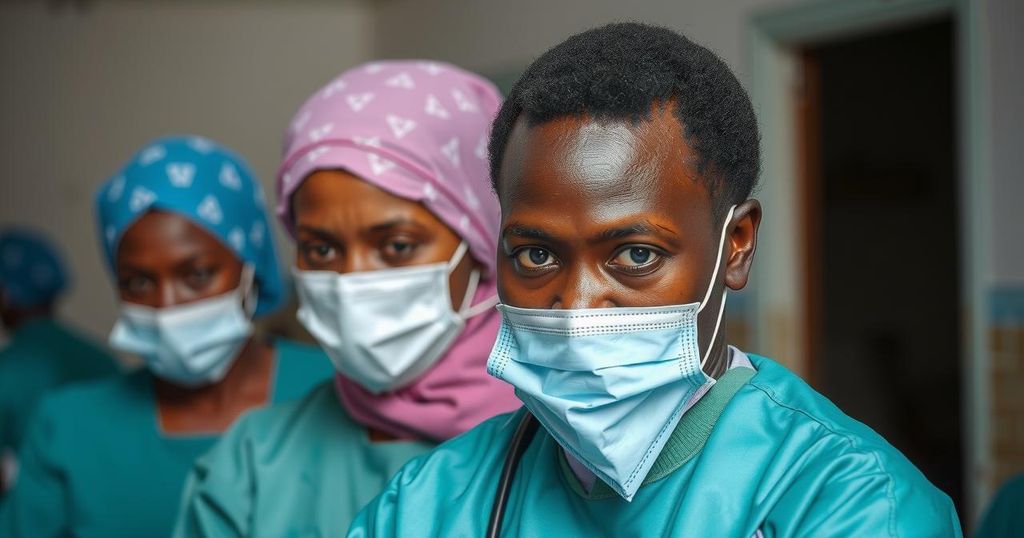Investigations Underway for Lethal Undiagnosed Illness in Congo

Health officials in the DRC are addressing an unidentified disease that has claimed 79 lives and infected 376 individuals, primarily affecting young children. Initial symptoms align with flu-like manifestations, while investigations continue to determine the disease’s nature and origin. The WHO is involved in sample collection and analysis to better understand this outbreak.
Health authorities in the Democratic Republic of Congo (DRC) are currently investigating a lethal, unidentified illness that has emerged in a region of the country. As of December 5, the Africa Centres for Disease Control and Prevention (Africa CDC) reported a disturbing total of 376 cases, resulting in 79 fatalities. This outbreak, which began in late October, has primarily affected the province of Kwango, situated near the Angolan border. Symptoms observed among patients resemble those of influenza, including fever, headaches, coughing, and respiratory difficulties, along with cases of anemia.
The World Health Organization (WHO) is collaborating with DRC health officials to comprehend the outbreak’s nature and to trace its origins. A team has been dispatched to collect samples for laboratory analysis and ascertain a clearer understanding of the disease’s impact. The DRC’s reported statistics indicate that over half of the infections have occurred in children under the age of five, who also represent the age group with the highest mortality rates due to this illness.
Amidst this investigation, health experts are expressing concerns regarding the rapidity of the outbreak, given the high mortality rate of approximately 21 percent among the confirmed cases. There remains considerable uncertainty about the disease’s characteristics, particularly regarding the role of anemia and the proportion of symptomatic versus asymptomatic cases. Ongoing evaluations of five laboratory samples are anticipated to yield results that could provide additional insight into this hazardous outbreak.
The current outbreak in the DRC is described as ‘mysterious’ due to its undiagnosed nature, which has hampered response efforts. Since its initial identification in late October, the illness has alarmingly escalated, prompting health agencies to engage in active surveillance. Limited surveillance and response mechanisms in remote regions hinder timely public health interventions, as evidenced by the time it took for local health officials to inform national authorities. Awareness and readiness from global health entities such as the WHO is crucial to mitigate further risks.
The situation in the DRC underscores the urgent need for enhanced surveillance and rapid response capabilities in remote areas to prevent the spread of infectious diseases. The high proportion of cases resulting in death, especially among vulnerable populations such as young children, highlights the critical importance of immediate diagnostics and effective treatment interventions. Continued investigations are vital to ascertain the disease’s origins and assist in managing public health risks both locally and globally.
Original Source: www.goodmorningamerica.com







